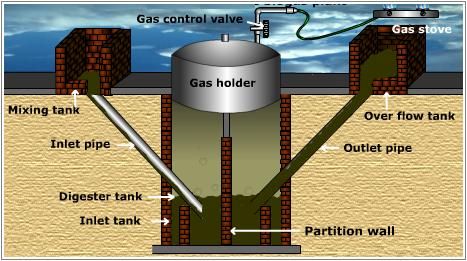
Now No waste from Animal waste !!! BLOG SHURUWAATAGRI
- Ayushi Shrivastav
- Feb 5, 2022
- 4 min read
Updated: Feb 8, 2022
Context:
What is livestock waste :
Livestock agriculture is the most important factor in the living of the Indian population.
Livestock consists of dominant, non-ruminant, and aquatic animals.
Livestock agriculture is a vital asset through we can ease living through livestock contribution which is nutritious food supply, employment generation, income generation, household earnings, asset saving, agricultural diversification, animal traction, soil fertility, and transportation.
Livestock is brought up for different purposes such are companions, leather, food, economic security, manure, etc.
By-products, during raising animals may consist of wastes such as left-over feed, wastewater, hatchery wasted, abattoir wastes, and manure. Manure has external contributors such as beddings, wash water, urine, precipitation, spilled feed, and spilled water.
There are two types of animals waste, solid and slurry. Solid waste includes dung.
Solid manure consists of:
Moisture 77%
Organic matter 20%
Nitrogen 0.32%
Phosphorus 0.14%
Potassium 0.30%
Calcium 0.40%
Dairy effluents include urine, dung, wash water, residual milk, waste feed, etc.
Poultry scraps include litter, water, spilled feed, feathers, bedding material, etc. 
Why waste management is important:
The animal wastes affect the atmospheric air by releasing a large amount of CO2 and ammonia which may result in acid rain and the greenhouse effect.
The animal wastes cause water pollution and spread infectious diseases by water if not properly disposed of. May contaminate water and release odors. The Surface water quality is impacted by:
Increasing turbidity through soil particles movement into rivers and lakes.
Increasing fecal coliform where heavy amount animals are raised.
In 2005, Gerba and Smith identified more than 150 microbial pathogens in all animal species that can be transmitted to man.
When manure is used as a fertilizer, pathogens can be transmitted from animals to humans by food crops or by groundwater.
Animal manure consists of a wide range of micro-organisms which results in food contamination and epidemics, therefore hazardous for human health.
According to the 19th livestock census, the population of livestock in India is 512.05 million and produces 1095 million MT dung per year.

Use of livestock waste
Proper utilization of livestock wastages by using them to produce biogas, compost, and vermicompost helps to increase crop yield and sustainability. Some developed and developing countries are worked out towards livestock wastes management and value addition.
Production of biogas
Slurry and liquid manure from cattle and pigs are used as raw materials in the digester for biogas production. Biogas production from livestock wastes and organic wastes is beneficial for the environment and helps to reduce greenhouse gas emissions from methane.
Biogas production by Anaerobic digestion: In an airtight chamber, biodegradable components of the manure are broken down by activities of bacteria in the absence of oxygen. The raw materials are livestock wastes ( manure), food waste, residues from the garden, etc. with high moisture content fed into the digester. The gas produced is called biogas which can use as fuel. Biogas comprises 55-65% methane, 30-35% Carbon dioxide, and other gases such as nitrogen and sulfur.
Production of compost

It is an aerobic process in which microorganism feeds on organic components in the presence of oxygen and result in fairly stable nutrient-rich soil amendment. Compost is used as a fertilizer in the agriculture field which improves soil structure and is also used as a microbial additive that enhances enzyme activities.
The application of compost is highly beneficial for the soil. It improves fertility, water-holding capacity, bulk density, and biological properties of soil. During microbial decomposition, odors are reduced, and fly eggs die due to high temperatures.
The ideal area for the composting site should be well-drained, having 2-4% slope, having concrete of packed soil. Windrows should be situated parallel to the slope. The manure should be piled. The C/N ratio should be 30 to 1. The water should store in 50% pore space and an aerobic pile must be required. In windrows, manure is piled. The pile should be 10-12 feet wide and 4-6 feet high. After one or two days, the temperature of the pile should reach more than 130F. The microorganisms require oxygen for energy – deriving chemical reactions that transform manure into compost. Turning should be done in the pile when the temperature reaches below 110F. Compost windrows should be turned in every 10 days. After 3-5 turns, the manure is composted well.
Production of vermicompost

Vermicomposting is the process of culturing earthworms in the presence of waste materials, in beds or bound chambers. Organic waste such as animal manures, sewage sludge, food production wastes, household wastes, etc. is used in vermicomposting. In vermicomposting, worms are used to convert organic wastes into humus( called vermicompost).
For effective vermicomposting beds, the optimum size should be 20 ft. length ground pits, 3 ft. width, and 2 ft. deep. Series of beds should be prepared in one place.
Vermicomposting is also done in the ground heaps. For ground heaps 10 ft. Length × 3 ft. width × 2 ft. High is the optimum size.
Materials for vermicomposting are farm wastes, fresh dung, earthworm: 1000-1200 adult worms ( 1kg per quantal of waste material), water : 3-5 litre in every week per heap of the pit. 500 worms should be added to each pit or heap. The materials are decomposed in 110 days. Watering should be done by sprinkler method and jute cloth pieces are used for covering.














Comments